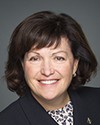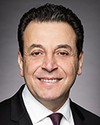The United States and Canada have been working together on regulatory harmony since 2011. President Obama and Prime Minister Harper at the time announced this regulatory co-operation effort. It is now supported by Prime Minister Trudeau and President Trump. It's a really good idea. We've been talking about it.
In terms of your particular question, there have been 35 different sectoral working groups in which officials in these various agencies, from Canada and from the United States, have been meeting pretty regularly, including with stakeholders to figure out where there are areas of just a slight difference, where's basically the same level of safety, but just a slightly different way it's tested.
The recommendations that we make on food safety, veterinary products, and medical devices would simply mutually align. If something is deemed safe in Canada, it's been inspected in Canada, and it's good enough for Canadians, the Americans would say, “That's good enough for our consumers too”, and vice versa. It's an immediate mutual recognition, which would be the first step.
The end goal is something that both of us mentioned. We call it a negative list; you called it a positive list. That's where you take the list of everything, all things, and say, “Everything regulated in the future must be harmonized, unless we set it aside and it's not.” In other words, instead of going line by line through every single medical device, food product, and manufacturing supply chain, and trying to figure out how to work it out, it's all got to be harmonized or mutually aligned, unless it's so contentious, or for whatever reason, you've got to set it aside as a negative list notion.




